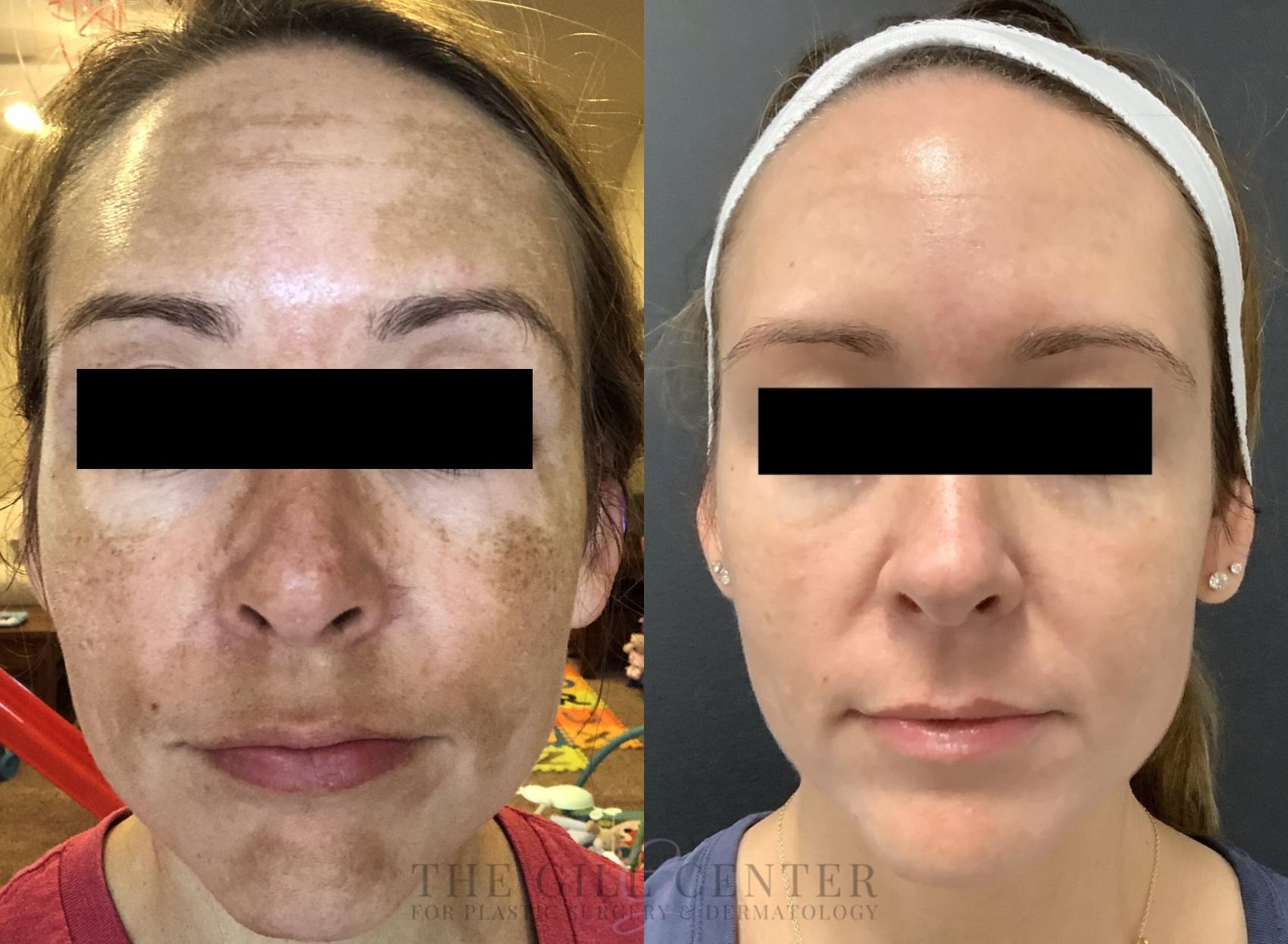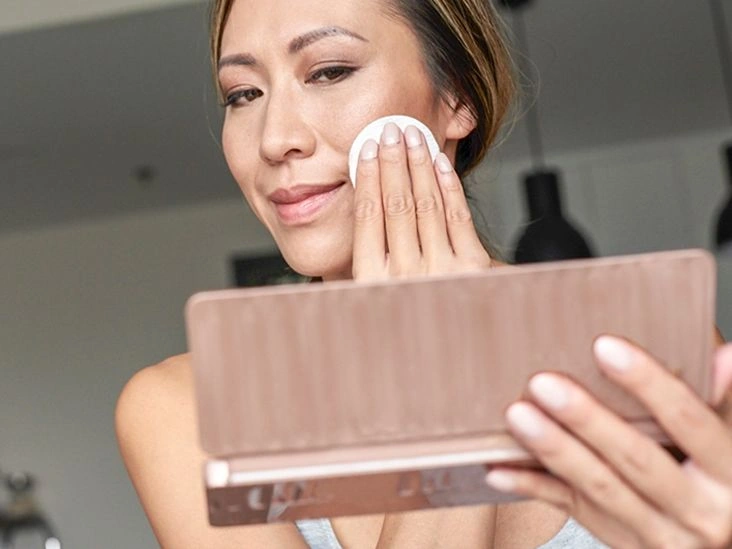Fast facts
About:
- TCA peels are cosmetic procedures that utilize trichloroacetic acid (TCA) to enhance the look of your skin.
- These peels are available in multiple strengths or concentrations of the acid.
- A TCA peel works by eliminating dead skin cells and encouraging the formation of new skin cells.
- Individuals use TCA peels to achieve a more youthful appearance and to address certain skin issues, such as melasma and acne scars.
Safety:
- Nearly 130,000 chemical peels were carried out by dermatologists in 2018, many involving TCA.
- Applying a TCA peel can sometimes cause short-term side effects like burning or discomfort.
- Following a chemical peel, you may experience redness and heightened skin sensitivity. In uncommon instances, scarring or infection can occur after a TCA peel.
- Choosing a licensed and certified health professional to perform the TCA peel reduces the chance of adverse effects.
Convenience:
- The peel application itself usually takes about 30 minutes.
- You can typically go back to normal activities after the peel, but protecting your skin from sunlight is crucial during recovery.
- This treatment is available from dermatologists trained in the technique.
Cost:
- TCA peels are generally not covered by insurance.
- The typical price for a full-face TCA chemical peel is $693. This pricing can vary based on location and provider.
Efficacy:
- Outcomes from TCA peels depend on the goals you have and the conditions being treated.
- Research indicates that peels containing TCA can be effective for treating acne and melasma.
What is a TCA peel?
A TCA peel is a noninvasive skin procedure used to treat discoloration, scarring, and wrinkles. The name comes from trichloroacetic acid (TCA), which is applied to remove dead skin cells and expose the newer, smoother layers beneath.
TCA peels belong to a class of skin procedures called chemical peels, which exfoliate the skin using varying strengths and blends of safe acidic ingredients.
TCA peel photos

Who is a good candidate for TCA peels?
Chemical peels can be superficial, medium, or deep. TCA peels are regarded as medium strength and should be administered by a trained skincare professional. An appropriate candidate for a TCA peel:
- is not pregnant or breastfeeding
- does not have a skin disease like psoriasis, eczema, or rosacea
- does not have an occupation that requires prolonged outdoor exposure
- has no history of keloid formation or poor wound healing
- will receive counseling from the physician beforehand about realistic outcome expectations
People who have used the acne medication isotretinoin (Zenatane, Amnesteem, Claravis) should avoid chemical peels for a period following completion of treatment.
How much does a TCA peel cost?
The price of a TCA peel depends on the treatment area and the desired outcome. In 2018, the average cost of a chemical peel was $693, as reported by The American Society for Aesthetic Plastic Surgery.
Remember that the expense of a TCA peel often extends beyond the procedure itself.
After a TCA peel, you’ll likely need additional moisturizing and protective products to help your face heal and to rehydrate the skin.
These skincare items can add to the overall expense, and their quality may affect both the outcome of your chemical peel and how long the improvements last.
If you work indoors or in an office, you probably won’t need to take time off after a TCA peel. Immediately after application, your skin will look very red and irritated.
As with other chemical peels, TCA peels are elective procedures. Therefore, they are not covered by health insurance.
How does a TCA peel work?
A TCA peel breaks down cells in the upper layer of your skin (epidermis). As the treated outer layer peels away, it stimulates regeneration of new cells beneath.
When the top layer has sloughed off, a fresh layer of skin becomes visible — often smoother and less affected by issues such as wrinkles or acne scarring.
Procedure for a TCA peel
The TCA peel session itself typically lasts about 30 minutes. You’ll be asked to recline while the dermatologist applies the TCA solution to your skin.
Many people feel a burning sensation during the initial minutes of the procedure, followed by stinging as the acid exfoliates and removes the upper skin layers.
The treatment is usually completed in a single visit. You may be advised to prepare your skin with certain products before a TCA peel to improve results.
If you aim for a particular outcome, multiple treatments might be necessary. It’s generally recommended to wait several months between chemical peels to allow complete healing.
Depending on your and your dermatologist’s decision, you might be sedated during the TCA peel.
Targeted areas for TCA peels
TCA peels are most commonly applied to the face. They can also be used to improve texture and tone on other parts of the body, including:
- back
- chest
- neck
- shoulders
- upper arms
Are there any risks or side effects
There are several possible risks and side effects. Common ones include:
- redness lasting several days or even weeks
- a herpes outbreak if you carry the herpes simplex virus
Rarely, a TCA peel can lead to:
- bacterial or fungal infection
- systemic organ damage from chemical exposure
Individuals with darker skin tones face a higher risk of hyperpigmentation after a chemical peel. Hyperpigmentation causes the treated layer to appear darker or uneven.
Discuss specific risks for your skin type with your doctor before undergoing a chemical peel.
After your peel, contact your healthcare provider immediately if you experience excessive redness, increasing swelling, oozing, blisters, or pus on the treated area.
What to expect after a TCA peel
Following a TCA peel, you may observe some immediate changes, though full effects can take three to four days to become apparent.
Once the initial redness subsides, your skin may feel tight. Over the next few days, the treated area will shed the skin affected by the TCA. It’s normal for the peeling to occur in patches over several days.
Avoid picking at or peeling the flaking skin with your nails. When the old skin has come off, the new skin beneath may look firmer, smoother, brighter, and more youthful.
While your skin is peeling, be diligent about wearing sunscreen and protecting it from sun exposure daily. Use a gentle cleanser to avoid stripping away extra moisture.
You may consider another chemical peel in three to nine months if you’re pleased with the outcome.
After the peel, continue applying sunscreen every day and limit UV exposure. You may also need to alter grooming routines, since waxing or sugaring hair in treated areas can harm the skin for weeks afterward.
Preparing for a TCA peel
Before a TCA peel, you might need to adjust your skincare routine.
Your provider may instruct you to “prime” or prepare the skin in the weeks leading up to the peel. Sunscreen and retinoic acid are often part of the priming process.
The Mayo Clinic recommends applying sunscreen daily for at least four weeks before any chemical peel. This helps promote a more even skin tone after the procedure.
It’s advised to stop using skincare products containing retinoids in the three days before your TCA peel appointment. Retinol-based ingredients can thin the skin, making it more susceptible to chemical damage.
TCA and other chemical peels
Dermatologists sometimes combine TCA with other acids and ingredients to formulate different chemical peels.
Jessner peels and glycolic acid peels may yield comparable outcomes to TCA peels. In a small 2010 study, glycolic acid peels and TCA peels (both used with pre-peel preparation) produced similar results for women seeking improvement in melasma symptoms.
Some gentler chemical peels are available for at-home use; these often contain lactic, glycolic, or citric acids.
While at-home peels may not deliver the same dramatic changes as professional treatments, they are more budget-friendly and generally pose a lower risk of complications.
How to find a provider
If you’re considering a TCA peel, book a consultation with a clinician who performs them. Results vary based on skin type, age, and other individual factors. Your provider should discuss realistic expectations, risks, and possible side effects.
The American Academy for Dermatologic Surgery provides a directory of dermatologists trained in chemical peels to help you locate a skilled and experienced practitioner.


















Leave a Reply
You must be logged in to post a comment.